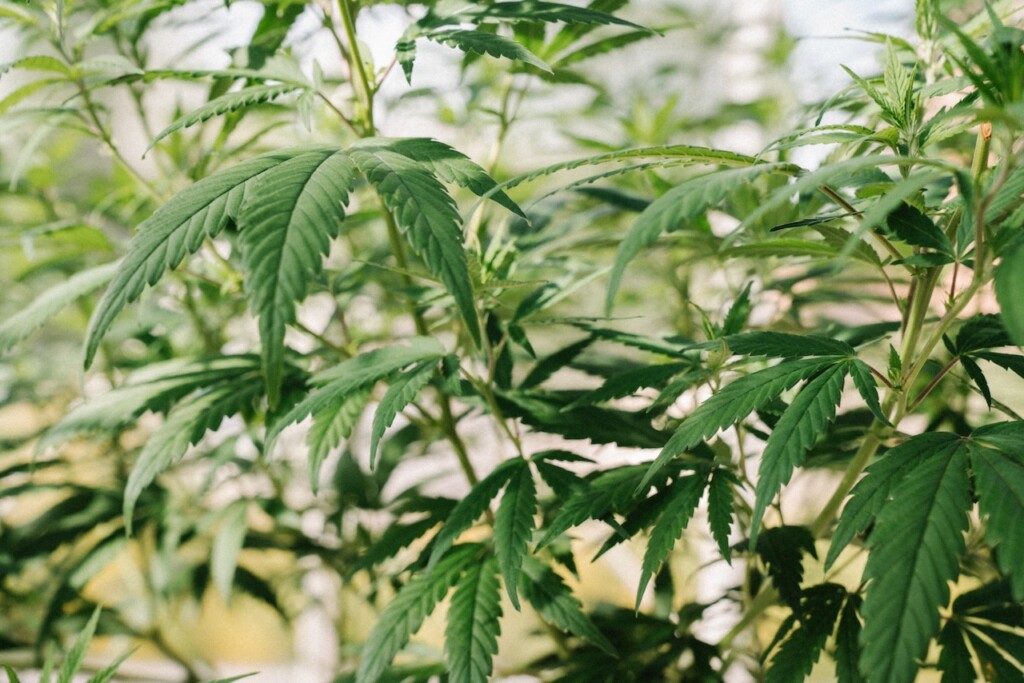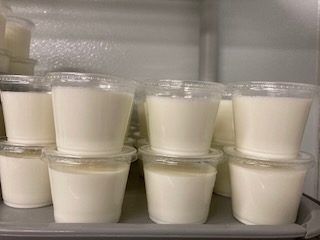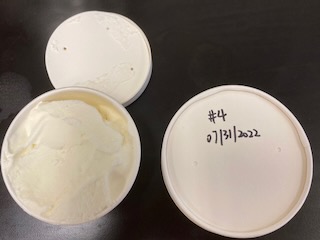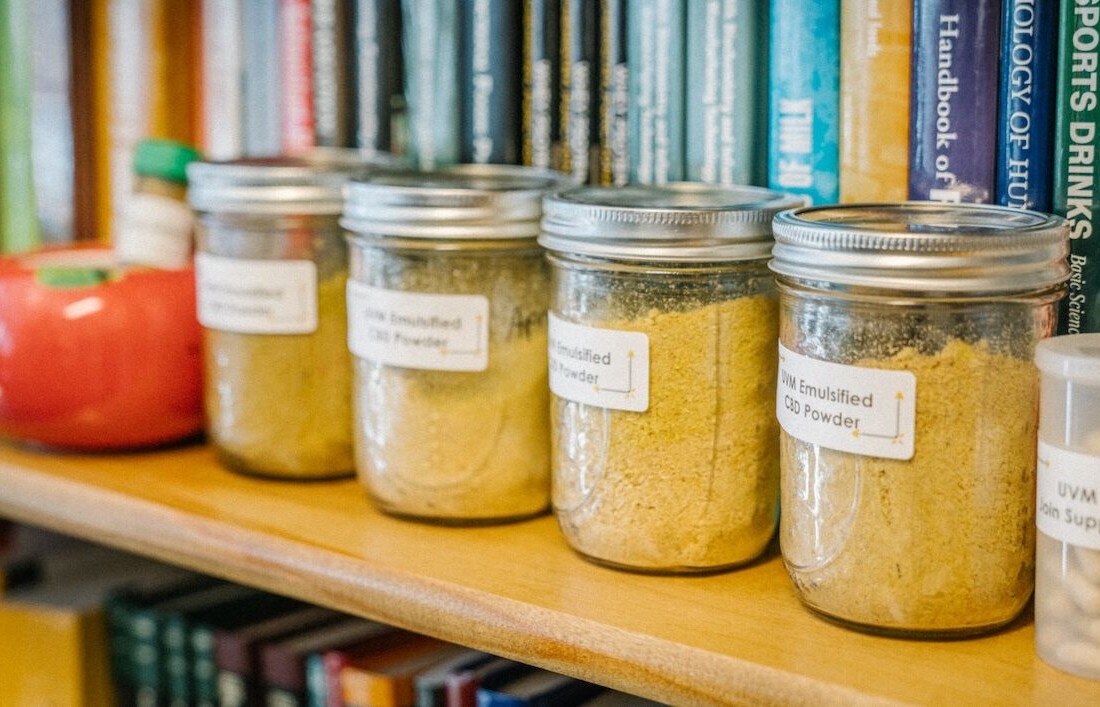Today, you can find cannabidiol (CBD) in everything from seltzer water and edibles to oils and salves. Though it’s not yet legal federally to add CBD to food and dietary supplements, many U.S. states currently allow it through state-specific legislation.
CBD, the naturally occurring, non-psychotropic cannabinoid of the hemp plant, doesn’t cause a high and is not addictive. It’s been used to treat epilepsy, neurodegenerative diseases, mental health disorders, nausea, and inflammation and inhibit cancer cell growth. Millions of people use CBD for a wide range of benefits.

There is a well-known issue, though: CBD doesn’t absorb well into the body, and it isn’t easy to know how much to take. Studies suggest that only six percent of the oil-based CBD products you take orally get absorbed into your system. That’s because CBD does not dissolve in water (the human bloodstream is mostly-water based). For your body to respond, you’d have to consume more than you need, a costly and wasteful problem.

Research conducted through the Medical Cannabis Center for Research and Education (MCCRE) at the University of Vermont Larner College of Medicine aims to change that.
Dr. Mingruo Guo, a food science professor at the UVM College of Agriculture and Life Sciences, and Dr. Kalev Freeman, a physician-scientist at the UVM Larner College of Medicine, are at the forefront of the development of new technology that they anticipate will make CBD six times more bioavailable, or easily absorbed by the body, compared to pure CBD.
“If you buy hemp oil, you may have 30 milligrams in three drops,” Guo said. “With this technology, you only need to use five or six milligrams to get the same effect. The CBD is made so available and effective in the body that you can use less and reduce what you need by 70 to 80 percent.”
Using CBD in a New Way, With Whey
The new patented technology developed in the food science lab at UVM effectively encapsulates CBD, including the “full-spectrum” or whole plant extract (a crude, unrefined extraction made from the resinous flower) to formulate food products and nutritional supplements.

The whole plant extract is more natural than isolated CBD (it retains more qualities of the original plant, including terpenes, flavonoids, and waxes). It’s also less expensive to produce because it doesn’t require as many processing steps.
The challenge with using crude hemp extract? The intense flavor and limited bioavailability. Guo and his team are working to solve those challenges with a natural product with unique chemical properties – whey protein.
“We use whey protein isolate or whey protein concentrate and a technology to modify the whey protein molecules to make them into a microgel,” Guo said of the process. “We treat it and then use the polymerized whey protein to encapsulate the hemp extract or CBD molecules into an emulsion or nanoparticle suspension.”
The process also reduces waste in the dairy industry. Over one-third of the whey generated by cheesemaking is disposed of annually in the U.S. as wastewater. It’s a waste stream that Guo says can be used to make CBD more beneficial to the human body.
“Our stomach is hostile because of acid, so we treat the CBD with the new whey technology, and the molecules get protected and wrapped up by the whey protein,” Dr. Guo said. “Then, they get through the stomach into the small intestine, where the most can be absorbed.”
Two different CBD nanoparticle applications are being tested: capsules and food.

CBD in a Capsule: New Possibilities in Medicine
Over the past several years, Freeman, an emergency medicine physician at UVM Medical Center, began noticing fellow physicians increasingly interested in the potential therapeutic benefit of CBD for their patients who were self-medicating with CBD for chronic pain, anxiety, or insomnia.
“Many of us were intrigued by reports of patients reducing or completely quitting their long-standing opioid use with the help of CBD,” he said. Yet, prescribing CBD is unchartered territory.
“If you go to a hospital pharmacist and I say, ‘I want to give somebody cannabis extract for a research study,’ they don’t have a way to put that into a pill or a capsule,” Freeman said. “There are ways to get isolated THC or CBD in a pill…but we were interested getting of the beneficial components of whole plant extract into a capsule form that could be used as an investigational new drug for clinical trials.”
Freeman began working with Guo to use the whey-protein microencapsulation technology to make a capsule containing the key components of any type of cannabis plant, with a focus on plants high in CBD.
“The main advantage of this method is that it can efficiently encapsulate the whole cannabinoid plant extract. It contains all the plant oils, flavors, and beneficial compounds. The microencapsulation keeps these ingredients stable in a standardized process,” Freeman said.
Making a stable and consistent capsule is critical in getting approval to conduct clinical trials with patients, which Freeman and Guo are working toward as they seek investigational new drug approval (IND) from the FDA.

Once approved, they say the possibilities for the capsule are exciting because it will enable delivery of a more meaningful therapeutic effect with a smaller dose. The potential applications include reducing inflammation in brain injury patients, pain in cancer patients, inflammation in joints, and opioid reduction.
“The idea is to have a natural health product. A key question is whether this will become a food supplement like vitamins or an FDA-approved drug we give in the hospital. Much of that relates to how the government regulates the products, which is still in process and evolving,” Freeman said.
Currently, the only FDA-approved use of CBD is through an oral solution called Epidiolex, prescribed for treating seizures associated with rare and severe forms of epilepsy.
CBD in Food: Better Flavor & Accessibility
Until the FDA approves the use of CBD in food and supplements, production and distribution will be limited. Despite this, Guo says demand for CBD is strong, and he and his team are preparing for the possibility of approval.
A dairy food chemist, Guo began testing the new whey-protein CBD nanoparticle technology in what he knows best: ice cream and yogurt. The benefits are two-fold.

“The technology is really great not only to reduce the hempy flavor by 80 to 90 percent, but it also protects the CBD molecules and increases CBD molecule absorption in dairy products. Whey protein exhibits high nutritional quality as well,” Guo said.
Guo says the technology isn’t limited to dairy.
“We can use another polymer besides whey to capsulize the CBD – we can use rice protein, or we can use soy protein, and other protein sources and other compounds. The technology can be used for so many different things,” Guo said.
The next phase of the research is to gain Institutional Review Board (IRB) approval from the FDA to begin testing the ice cream and frozen yogurt with research participants.
Whether used in food or medicine, the goal is the same for the whey-protein nanoparticle CBD technology: make the beneficial compounds in CBD more digestible in the body, sustainable in their production, and easier to access for the medical community and the public alike.




